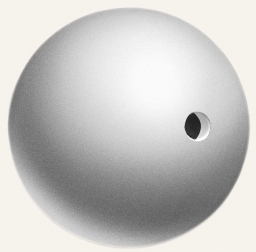Sphere radius
We reduce the radius of the sphere by 1/3 of the original radius. How much percent does the volume and surface of the sphere change?
Final Answer:

Tips for related online calculators
Need help calculating sum, simplifying, or multiplying fractions? Try our fraction calculator.
Our percentage calculator will help you quickly and easily solve a variety of common percentage-related problems.
Check out our ratio calculator.
Tip: Our volume units converter will help you convert volume units.
Our percentage calculator will help you quickly and easily solve a variety of common percentage-related problems.
Check out our ratio calculator.
Tip: Our volume units converter will help you convert volume units.
You need to know the following knowledge to solve this word math problem:
solid geometrybasic operations and conceptsnumbersUnits of physical quantitiesGrade of the word problem
We encourage you to watch this tutorial video on this math problem: video1
Related math problems and questions:
- Rotating cone
 How does the volume of the rotating cone change if: a) double the radius of the base b) We reduce the height three times c) Reduce the radius of the base five times
How does the volume of the rotating cone change if: a) double the radius of the base b) We reduce the height three times c) Reduce the radius of the base five times - Difference 6974
 There is a difference between the two numbers. We will reduce the minority by 23. How do we have to change the minority so that the original difference does not change?
There is a difference between the two numbers. We will reduce the minority by 23. How do we have to change the minority so that the original difference does not change? - Twice of radius
 How many times does the surface of a sphere decrease if we reduce its radius twice?
How many times does the surface of a sphere decrease if we reduce its radius twice? - Dimensions 60943
 We will reduce one edge of the block with dimensions of 2cm, 4cm, and 6cm by 20%. How does the volume of a block change? What percentage?
We will reduce one edge of the block with dimensions of 2cm, 4cm, and 6cm by 20%. How does the volume of a block change? What percentage? - Dimensions 82810
 The block has 10 cm, 20 cm, and 50 cm dimensions. We reduce the first edge of the cuboid by 20% and increase the second by 20%. How does the volume of the cuboid change? By how many percent?
The block has 10 cm, 20 cm, and 50 cm dimensions. We reduce the first edge of the cuboid by 20% and increase the second by 20%. How does the volume of the cuboid change? By how many percent? - Prism dimensions
 We will double one block dimension and reduce the other by a third. How does its volume change?
We will double one block dimension and reduce the other by a third. How does its volume change? - Original 63974
 If we reduce the length of the cube edge by 30%, this cube has a reduced surface area of 1176 cm². Find the edge length and volume of the original cube.
If we reduce the length of the cube edge by 30%, this cube has a reduced surface area of 1176 cm². Find the edge length and volume of the original cube.
